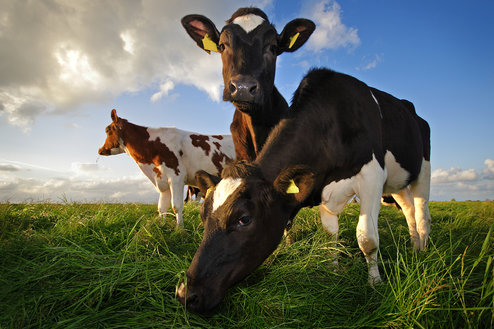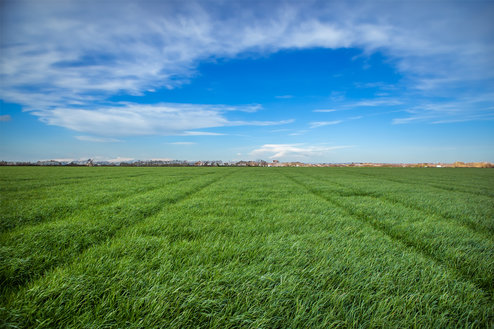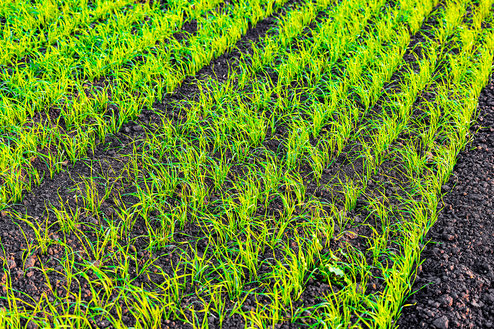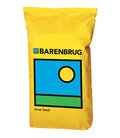Winter Grazing Management Plan
Now, if you’re a regular reader, you’ll know how much value Barenbrug always places on the value of home-grown feed. That’s because no-one has yet come up with a better way to feed livestock. Whether grass, or home-grown forage, everything you can grow on your farm is more cost-effective for producing litres of milk or kg of meat than anything you can buy in from outside.

Meanwhile, if you’ve got a fodder budget in place, you’ll have already worked out the anticipated date when the livestock come in for the winter. But following what was record-breaking rainfall for some of the UK in September 2024 – England had 95% more than the long-term average – and with October’s 2024 rainfall already shaping up as another above-average month, it might be wise to put that contingency plan into action…and bring livestock in sooner.
Returning to that opening line, if you can prevent damage now – from poaching, erosion, soil compaction – you’ll be faced not only with less work next year (remedying that damage), but you’ll also let your fields get off to a better start in spring. By maintaining a healthy soil structure, you’ll preserve or enhance nutrient cycling, drainage and infiltration capacities, the macro and microbiome…the list goes on.
Damaged pastures are less productive, often weedier, more difficult to drive over, and cause soil contamination in silage. It’s not something to aspire to!

By far the best way to be sure you’re taking a sound approach to winter pasture management is to conduct a farm and pasture assessment. Think of it as an extension to the grassland indexing we’ve talked about previously; not just because it can be done at the same time, but also because some of the underlying factors are connected.
Not all fields are at the same risk of damage during wet or inclement weather. Soil type, the presence or absence of drains, how they’re used, how they’ve been used – all of these will influence a field’s ability to either succumb easily to damage, or to shrug it off like water off a duck’s back.
Once you know where your highest risk fields are, as well as your highest value fields that you’ll want to protect at all costs, you’ll be mindful of what you have and able to create a plan. Make sure that plan also includes a ‘best before’ date for getting the housing ready (think worst-case timing) and consider other factors such as vaccination intervals, and so on. So, when the chips are down, you’re better placed to understand the resources you have, how to use them – and to be sure you’re using them to best effect.

Think of it like this. Using field assessment to judge when it’s time to call a day on grazing for the year is not cutting the season short; instead, you’re extending it – because by spring, those fields won’t need any remedial action to bring them back into production.
As with any plan, use your measurements to manage: assess things, year-on-year, to see how it’s gone and how that compares to how you wanted it to go. Do you need to revise your production goals? What changes might be needed?
One of those changes might involve tillage. If you haven’t recently re-examined your tillage practices, then it might be time to do so. If tillage is still the same as it ever was, then can you be sure that what you’re doing is good for your soil, best suited to changing weather patterns, or conducive to your overall farm plans? And when you’ve considered those, how does your machinery and labour availability match?

There may be some good clues in your field assessments, too. If you’ve noticed variable performance in a field, which can’t be accounted for by soil type, then tillage might be your limiting factor – and new focus. Perhaps it’s time for a chat with your contractor.
Finally, once the livestock leave the fields, give some thought to what’s in them – or not. Grassland is one of the best ‘field systems’, if we can call it that, for good soil health. That’s because it keeps roots in the ground, and minimises soil disturbance. Together, that means soil erosion is largely prevented, and soil structure is improved.

But we can do better than that. Any time there’s more than one type of plant in the ground, there’s an increase in biodiversity. When you’ve got half a dozen different plants in the ground – none of them weeds, of course – then that biodiversity is increased several-fold. You’ve got better soil structure, greater variation in soil pore size, increased aeration, improved water infiltration and more water retention, and so on. On top of all that – literally – you’ve got a thick, dense sward that keeps weeds at bay and further reduces erosion and run-off.
It’s a win-win situation. Think back to your farm plan and consider which fields might present the best opportunities for introducing a more diverse sward. Soil health will be the biggest beneficiary from a mix like Barmix – a blend of new cocksfoot and tall fescues alongside the increasingly favoured Gracehill perennial ryegrass – or one of the SFI-focused mixtures, herbal ley style, for the reasons outlined above.
And although more rain might be forecast after an already wet season, by next year, we could be worried about a lack of rain, the added dry resilience of a mixed sward will be very welcome.




